#arundel cathedral
Text
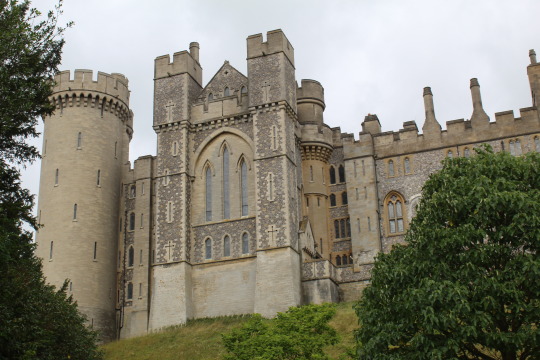
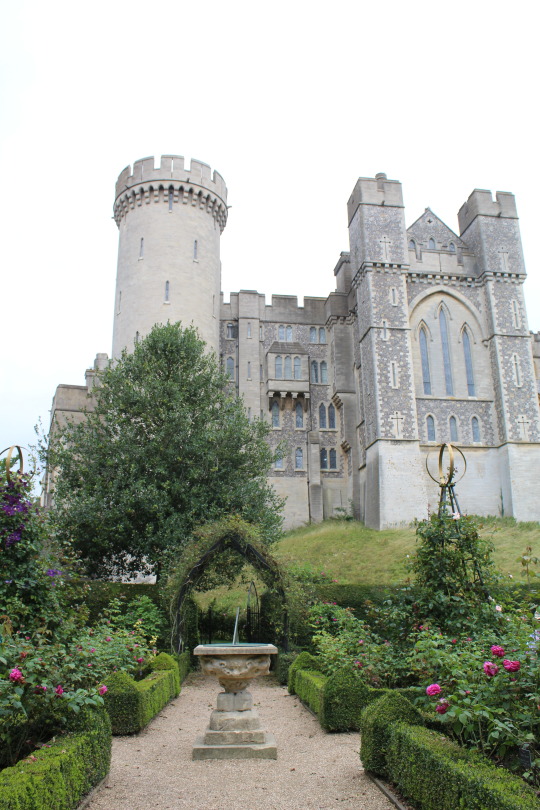
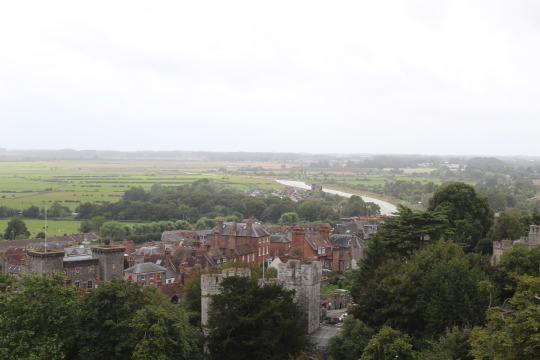

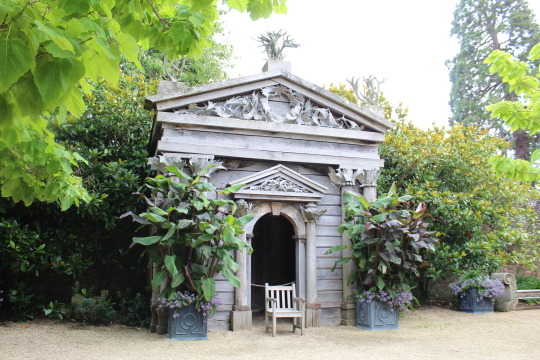

Birthday trip to Arundel, West Sussex. 💗
3 notes
·
View notes
Text

Cathedral Church of Our Lady and St Philip Howard , Arundel , England 🏴
0 notes
Text

Arundel Castle and Cathedral in Sussex
photo credit Linda Gunn.
#dark academia#light academia#academia aesthetic#classical#academia#escapism#classic literature#books#books and libraries#architecture#castle#royal core#cottage#sussex#aesthetics#old building#nature aesthetic
239 notes
·
View notes
Text
Buckinghamshire VS West Sussex
Buckinghamshire and West Sussex are both counties in England, and they have distinct characteristics. Here's a brief comparison of the two:
Location:
Buckinghamshire: Located in South East England, Buckinghamshire is close to London and is known for its picturesque countryside, historic towns, and proximity to the Chiltern Hills.
West Sussex: Situated in the South East of England as well, West Sussex is known for its diverse landscapes, including the South Downs National Park, beautiful coastline, and historic towns.
Countryside and Landscapes:
Buckinghamshire: Known for its rolling hills, the Chiltern Hills Area of Outstanding Natural Beauty, and the Thames Valley, Buckinghamshire offers a mix of rural and suburban landscapes.
West Sussex: Offers a diverse landscape with the South Downs, which is a range of chalk hills, as well as coastal areas along the English Channel.
Economy:
Buckinghamshire: The county has a strong economy, with a mix of industries including technology, healthcare, and finance. It is home to some affluent towns and has good transport links to London.
West Sussex: The economy in West Sussex is varied, with a focus on agriculture, manufacturing, and tourism. It also has commuter towns and is within reach of London.
Towns and Cities:
Buckinghamshire: Includes towns such as High Wycombe, Aylesbury, Olney and Milton Keynes. Milton Keynes is a new town known for its modern planning and development.
West Sussex: Chichester, Worthing Littlehampton, and Crawley are among the towns in West Sussex. Crawley is known for its proximity to Gatwick Airport.
Historical and Cultural Attractions:
Buckinghamshire: Boasts historical sites like Bletchley Park, the former World War II codebreaking centre, as well as historic houses like Waddesdon Manor.
West Sussex: Features attractions such as Chichester Cathedral, Arundel Castle, and the Weald and Downland Living Museum.
Transportation:
Buckinghamshire: Well-connected to London by road and rail, with the M40 motorway passing through and several train services.
West Sussex: Accessible by major roads, and Gatwick Airport, one of the busiest airports in the UK, is located in West Sussex.
Ultimately, the choice between Buckinghamshire and West Sussex depends on personal preferences, lifestyle, and specific needs. Both counties offer a mix of rural charm, historical attractions, and economic opportunities.
#Buckinghamshire#West Sussex#South East England#County Comparison#Chiltern Hills#South Downs National Park#Rural Living#Historical Attractions#Economic Diversity#Towns and Cities#Transportation#Countryside Landscapes#Chichester#High Wycombe#Aylesbury#Worthing#Crawley#Bletchley Park#Arundel Castle#Local Economy#today on tumblr#new blog
5 notes
·
View notes
Text
I have a list of blogs I want to write that are far more relevant to this sideblog but stuff it, I'm going to talk about William Courtenay's will and his burial.
So, in William Courtenay's will, drawn up in the summer of 1395, he asks for burial in Exeter Cathedral in a "worthy manner" in a place that appears fairly prominent within the church. Here's the relevant paragraph (I'm quoting from Joseph Dahmus's translation in his biography of Courtenay):
First, I leave my soul to the omnipotent God, my Creator and Redeemer, submitting myself and it to his mercy of which there is no number. My body which will be corrupted and decay I wish to have buried as quickly as possible in a worthy manner in the nave of the cathedral church of Exeter at the place where there now lie three deans in a row before the great cross, for which occasion no great lords should be invited but only the bishop and those in the vicinity. I wish that the bishop of the place bury me unless my venerable brother Lord Thomas by the grace of God archbishop of York and primate of England, should come in accordance to an earlier agreement between us; in which case I ask my brother, the bishop of Exeter, whoever he is, and all belonging to his church and diocese, that out of reverence for God, his church, and my poor prayers, they show all reverence, honor, and kindness to it.*
Archbishops of Canterbury weren't always buried at Canterbury Cathedral and Exeter Cathedral was where William's parents were buried and where he had been a prebendary so there's nothing really surprising or strange about that.
But on 28 July 1396, three days before his death, William added a codicil to his will (going by Dahmus's translation, it seems to have been a verbal codicil recorded by witnesses), where he said he felt unworthy to be buried inside any great church and asked for burial the churchyard of the collegiate church he had founded at Maidstone the year before and was still being constructed at his death (it was finished under Archbishop Arundel). Here's the relevant bit:
What was written above was and is the true testament of William of pious and worshipful memory, recently while he lived archbishop of Canterbury by the grace of God, now deceased, except in so far as the will is modified by a subsequent codicil, namely that on July 28 just past, the same most reverend father, languishing in his last agony in an inner room of his manor of Maidstone in the diocese of Canterbury, willed and directed that since he did not consider himself worthy, as he said, to be buried in his metropolitan or any cathedral or collegiate church, wished and chose to be buried in the churchyard of the collegiate church of Maidstone at a place pointed out to John Boteler his squire.
In the space of a year, William has gone from wanting to be buried in a prominent place within a cathedral with strong ties to his birth family to feeling worthy only being buried in the churchyard, in the dirt, of his foundation at Maidstone.
It seems to be a major change of mind. Even extreme. I want to know why he changed his mind. I want to know why he felt unworthy of burial that his position and social status. My writer's brain fizzes. There could be a good story here, the story of guilt and shame. A dying man comes face to face with a singular sin that he has committed and decides he is no longer worthy of the prestigious burial he had planned for himself.
We don't know why William changed his mind. The codicil is the only surviving evidence of his change in mind. And, while William was an important figure in Richard II's reign and the history of Lollardy, he wasn't one of the more pivotal or partisan figures** to become the subject of speculation, much less the speculation to focus on his wish to be buried within the churchyard.
The only discussion I've found is in Dahmus, who says:
For as Courtenay lay languishing on his deathbed, what remained of his pride oozed away with his spirit, and he was left feeling too humble to be buried in Exeter cathedral or any other great church.
It is very possible that in the face of his encroaching mortality, suffering from the "agony" of what appears to have been a lengthy illness, William felt himself humbled and penitent. He was approaching his death - this codicil was made only three days before he died - and would've believed that judgement awaited him. A lengthy illness could be interpreted as the sufferer going through Purgatory in life, which would also add to the atmosphere of penance. His choice of burial was probably tied up with this idea of penance.
But we are no closer to knowing what William's sins were and which ones troubled him the most. One might say the pride or arrogance in which he handled matters - but that is our reading of his actions and attitude and not his own. Would he have seen his actions as prideful or as showing obedience to God or the pope?
It would be easy to speculate and come up with various "sins" he committed and is trying to perform penance for. But we know only a small fraction about the private lives of any late medieval person, even the famous ones, and with someone more on the obscure side, like William, it's virtually impossible to know what William was really like or what sins he might have done. In the end, what sins we'd come up would speak more to our own interests, biases and beliefs than William's life.
If I wanted to push a narrative about Lollardy and reformation, I might say that William's sin was that he regretted his attempt to suppress the movement rather than letting the reformation happen. Or I might want to speak to its survival despite William's efforts by depicting William regretting his failure to fully crush Lollardy with a knowing wink to the audience who knows the Reformation is coming.
Or I might want to depict William's regret as completely grounded in Richard II's court, and depending on whether I'm Team Richard or Team Appellants, I might depict him as regretting not supporting Richard against the Appellants or not supporting the Appellants against Richard. Or there might be a depiction of something in the middle, something more moderate.
Or I might see William entirely within the context of his relationship with John of Gaunt. That he regretted their quarrel descended to such lows. I might be a Gaunt fan who thinks William's worst sin was the one of disagreeing with Gaunt and that he should have grovelled in apology. Or I might go full sickos.jpg mode and think that William was regretting his torrid love affair with Gaunt and the nights of wild sex (n.b. I don't actually think this happened).
Or I might be interested less in William as a person or in his own context but see him as an icon of the Catholic Church, and was guilty of one or more faults or crimes attached to that institution, whether they be modern or medieval. He might have been the lecherous priest or guilty of the clerical vice of sodomy. He might have been an usurer and more interested in protecting the church's reputation and rights than doing what was right and just.
My own interest is in William's relationships with his family (obviously, the most important to me is his relationship with Richard Courtenay, his nephew, foster son and probable godson). I'm thinking of an alienation or a quarrel or something.
But none of these routes of speculation tell us what really happened. They only provide us with a narrative that confirms our own biases. Even the things I think are most likely just speak to my own biases. My personal feeling is that the most likely option that has the most evidence behind it is the idea that he regretted failing to squash the Lollard movement completely - he does seem to have cared about that but I don't see this regret as proof of a "see! the Reformation triumphed!" or proof of his own moral and religious failings. How I read William is that he was firm in his convictions and morally upright - he believed Lollardy was heresy, an affront to God, and his failure to root it out weighed heavily upon him. That also reflects my ambivalent relationship with Lollardy - I don't see it as an unqualified good to see William's stance against it as an unqualified evil. Personally, I'm going "oh just leave each other alone".
And personally, if I was writing this as a story, I think it's not a story I'm particularly interested in so I'd probably pick another sin.
Did William really regret failing to stomp out Lollardy? It's impossible to say for sure. There's no evidence.
He does seem to have experienced spiritual anxiety in his final years. Obviously as evidenced by his change of mind about his burial, his feeling of being "unworthy" for burial inside of a great church. But the codicil also added the amendment requesting that his executors pay his debts and the legacies he willed to his household members, but to void the legacies to those outside his household, and what remained of his goods be used to fund his foundation of the Maidstone collegiate church.*** It does seem like his focus had narrowed to the spiritual and the household.
And of course, William appears to have been ill for a long time before his death - his original will was drawn up a year before his death. There was the thought that a long illness could be a sign of God's favour, allowing the sufferer to begin undergo the trials of purgatory before their death, which would further William's sense of spiritual anxiety and penitence. The unworthy burial might also be itself a form of penance, letting his body be food for worms rather than embalmed and placed inside a prominent position in a great church.
Some of it might just be good old Catholic guilt. There doesn't have to be one major sin but a series of minor infractions. Augustine of Hippo bewailed committing the sin of taking a pear from a tree as a teenager. Everything was potentially a sin. Every thought, every word, every deed, every dream. For William, it might have been a series of tiny infractions rather than one major one.
----
Dahmus notes it was "improbable" that his executors intended to bury him in the churchyard, "for it would have been most exceptional to have buried any fourteenth-century bishop outside a church". I wonder if William knew it, if his request was cynically made knowing he wouldn't have been buried in the churchyard. Yet the wording seems genuinely given.
His request wasn't fulfilled. A memorial brass for William was (or is?) found in the Maidstone collegiate church and an effigy-tomb was found in the Trinity Chapel at Canterbury Cathedral. Until the late 19th century, debate raged over whether William was buried at Maidstone or Canterbury. In 1794, the slab at Maidstone was raised and some bones were found and some believed this was to be Courtenay, but there was no episcopal ring or crozier, and the teeth were considered too perfect to belong to a man as old as William had been. The Canterbury Chapter Records were later checked by M. Beazeley and the register recorded that Richard II had delivered William's body to be buried in Canterbury. Beazeley considered William's burial in Canterbury Cathedral was Richard making amends for the speedy election of the new archbishop (necessary for his marriage to Isabelle de Valois) after William's death.
* Some commentary: 1. William, I bet you loved transi tombs. 2. The difference between his request to be buried "as quickly as possible" compared to John of Gaunt's request for a period of 40 days before burial. 3. The agreement between William and the "Lord Thomas" archbishop of York who, of course, was Archbishop Arundel and Courtenay's successor (they do appear to have been friendly). 4. The request that no great lords be invited - none for John of Gaunt, none for Richard II etc etc.
** Of the great events in Richard's reign, William doesn't appear to have played a major role in the Peasants Revolt or the Appellant Crisis, and he had died before Richard's alleged tyranny and deposition. He played a greater role in church affairs and while he seems to have attempted to curb Lollardy, his efforts never reached the extremes they did under his successor, Archbishop Arundel.
*** We don't know to what extent this was honoured; the church was completed by Arundel and some legacies outside of his household appear to have been paid out - his single largest bequest was to Christ Church and this was fulfilled, while his nephew, Richard Courtenay, appears to have gotten at least some of the items willed to him (whether Richard was part of William's household is unknown, he seems to have been fostered by William who refers to him as his "dearest child and foster son").
1 note
·
View note
Text
Restoring Clarity: The Art of Arundel Glass Repair

In the picturesque town of Arundel, nestled amidst historic architecture and quaint cobblestone streets, there lies a craft that embodies both precision and artistry: Arundel glass repair. From centuries-old stained glass windows to modern architectural marvels, the restoration of glass in Arundel is more than just a service—it's a testament to preserving history and beauty.
Exploring the Craft
Arundel glass repair is more than just fixing cracks and chips; it's about understanding the essence of each piece and the stories it holds. Every pane of glass, whether it adorns a church's intricate rose window or graces a contemporary office building, has its own unique character and significance.
The artisans behind Arundel glass repair approach their craft with reverence and expertise. They employ time-honored techniques alongside modern innovations to delicately restore glass to its former glory. Whether it's repairing intricate patterns or matching the exact hue of a vintage stained glass panel, every step is executed with meticulous care.
Preserving Heritage
One of the most compelling aspects of Arundel glass repair is its role in preserving heritage. In a town steeped in history, many buildings boast windows that have witnessed centuries of events and emotions. From the somber hues of medieval cathedrals to the vibrant tones of Victorian storefronts, each piece of glass tells a story.
By skillfully repairing and restoring these windows, Arundel artisans ensure that these stories continue to be told for generations to come. They understand the importance of maintaining the integrity of historical architecture while also adapting to the needs of modern preservation efforts.
Blending Tradition with Innovation
While the techniques of Arundel glass repair may have ancient origins, the craft itself is far from stagnant. Artisans continually explore new methods and materials to enhance their work, balancing tradition with innovation.
From advancements in adhesive technology to the development of specialized tools, Arundel glass repair evolves to meet the demands of an ever-changing world. Yet, amidst these advancements, the core principles of craftsmanship and dedication remain unwavering.
The Beauty of Imperfection
In the world of Arundel glass repair, imperfection is celebrated rather than concealed. The subtle variations in color, the delicate lines of a repair, and the patina of age all contribute to the character of a restored piece.
Rather than striving for flawless perfection, artisans embrace the unique quirks and nuances that make each restoration a work of art in its own right. It's this appreciation for imperfection that elevates Arundel glass repair beyond mere craftsmanship and into the realm of true artistry.
0 notes
Text

SAINTS DECEMBER 29
St. Thomas Becket, Roman Catholic Priest and English Martyr. was Archbishop of Canterbury from 1162 until his murder in 1170. He is venerated as a saint and martyr by both the Catholic Church and the Anglican Communion. He engaged in conflict with Henry II of England over the rights and privileges of the Church and was murdered by followers of the king in Canterbury Cathedral. Soon after his death, he was canonised by Pope Alexander III. Feastday
From statesman to martyr: Thomas à Becket was Chancellor to his friend, the English King Henry II, who willed that he become Archbishop of Canterbury, opposed his friend the king to defend the rights and liberties of the Church. He was killed in Canterbury Cathedral on December 29, 1170.
https://www.vaticannews.va/en/saints/12/29/st--thomas--becket--bishop-of--canterbury--martyr.html
Bl. William Howard, 1680 A.D.
Martyr of England. He was born the son of Thomas, earl of Arundel, in 1616 and raised a Catholic. The grandson of Blessed Philip Howard and a member of the noble family of the Howards, William held the title of Viscount Stafford. He was made a Knight of the Bath by King Charles I (r.1624-1649), and married Mary Stafford in 1637. In 1640, William was named Baron Stafford. A county in Virginia in the United States bears his name. He was arrested on the false accusation of complicity in the so-called Popish Plot and imprisoned for two years before finally being beheaded on Tower Hill on December 29. He was beatified in 1929
St. Aileran, 664 A.D. Monk, biographer, and scholar. Also called Sapiens the Wise. Aileran was one of the most distinguished professors at the school of Clonard in Ireland. St. Finian welcomed Aileran to Clonard. In 650, Aileran became rector of Clonard, and was recognized as a classical scholar and a master of Latin and Greek. He wrote The Fourth Life of St. Patrick, a Latin-Irish Litany and The Lives of St. Brigid and St. Fechin of Fore. His last work was a treatise on the genealogy of Christ according to St. Matthew. A fragment of another of Aileran's works has survived: A Short Moral Explanation of the Sacred Names. Scholarly institutions across Europe read this work aloud annually. Aileran died from the Yellow Plague. His death on December 29, 664 is chronicled in the Annals of Ulster.
0 notes
Video
Arundel Cathedral, West Sussex, England in 3D video 2560x720
Instructions for viewing 3D without glasses (with the naked eye): keep your head upright in front of the “double” picture, and look at your nose tip. In this process, the pictures will begin to approach each other, “crawling” one on top of the other in the space between them. You need to catch the degree of slant of the eyes where the combined image takes on depth and sharpness - and maintain it. Wikipedia recommends placing your fingertip just below the separation between the two images to facilitate "merging", then slowly moving your finger closer to your eyes while keeping your gaze on the tip; at a certain distance, the merged 3D image should appear to be hovering just above the finger.
I offer drone video creators a free-of-charge conversion to 3D video (if large picturesque objects) for subsequent co-op exploitation. For details visit https://syla.top/by-angels-eyes/profitable-drone.html. This 3D video "by angel's eyes - iXYt" side-by-side cross-view,is rebranding of youtube.com/@anatlaz to youtube.com/@ixyt
0 notes
Text
Larkin's "An Arundel Tomb"
Pictured above is the 14th-century tomb effigy in Chichester Cathedral that inspired Philip Larkin’s poem “An Arundel Tomb.” It is the tomb of Richard FitzAlan, 10th Earl of Arundel (1306-1376), and his wife, Eleanor of Lancaster, Countess of Arundel (1311- 1372) Notice how Richard’s glove has been removed so he can grasp the flesh of Eleanor’s hand. The poem ends with these evocative lines:
Time…

View On WordPress
0 notes
Text
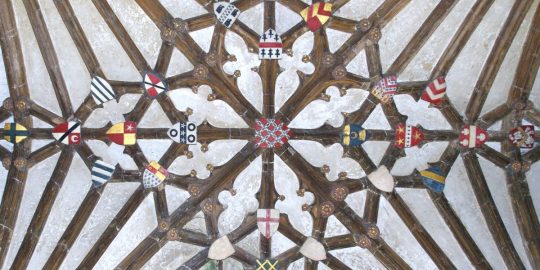
The Great Cloister of Canterbury Cathedral
Dr Paul A Fox, FSA, FHS
The cloister is effectively a roll of arms designed during the reign of Henry IV and into the very beginning of the reign of his son Henry V by Archbishop Thomas Arundel. Construction occurred in the period 1408-1414. The above picture shows some of the lost shields, while others have been incorrectly painted. A painstaking process of reconstruction, largely based on a new analysis of contradictory antiquarian sources, has made it possible to restore many of the losts shields and to determine with high confidence the correct original colours. These findings are to be presented in a new book, but in the meantime it is possible to walk around the cloister with a reconstruction of how it probably looked at the end of the medieval period, with each shield labelled for its owner.
14 notes
·
View notes
Text
Larkin's "An Arundel Tomb"
Pictured above is the 14th-century tomb effigy in Chichester Cathedral that inspired Philip Larkin’s poem “An Arundel Tomb.” It is the tomb of Richard FitzAlan, 10th Earl of Arundel (1306-1376), and his wife, Eleanor of Lancaster, Countess of Arundel (1311- 1372) Notice how Richard’s glove has been removed so he can grasp the flesh of Eleanor’s hand. The poem ends with these evocative lines:
Time…
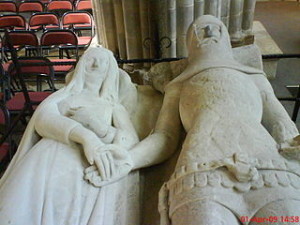
View On WordPress
0 notes
Text
Psalms 37:4
Delight thyself also in the Lord;and he shall give thee the desires of thine heart.
Arundel Cathedral by Philip Windibank is licensed under CC-BY-SA 2.0

View On WordPress
0 notes
Text

An Arundel Tomb ~ Philip Larkin
An Arundel Tomb
Side by side, their faces blurred,
The earl and countess lie in stone,
Their proper habits vaguely shown
As jointed armour, stiffened pleat,
And that faint hint of the absurd–
The little dogs under their feet.
Such plainess of the pre-baroque
Hardly involves the eye, until
It meets his left hand gauntlet, still
Clasped empty in the other; and
One sees, with sharp tender shock,
His hand withdrawn, holding her hand.
They would not think to lie so long.
Such faithfulness in effigy
Was just a detail friends could see:
A sculptor’s sweet comissioned grace
Thrown off in helping to prolong
The Latin names around the base.
They would not guess how early in
Their supine stationary voyage
Their air would change to soundless damage,
Turn the old tenantry away;
How soon succeeding eyes begin
To look, not read. Rigidly they
Persisted, linked, through lengths and breadths
Of time. Snow fell, undated. Light
Each summer thronged the grass. A bright
Litter of birdcalls strewed the same
Bone-riddled ground. And up the paths
The endless altered people came,
Washing at their identity.
Now, helpless in the hollow of
An unarmorial age, a trough
Of smoke in slow suspended skeins
Above their scrap of history,
Only an attitude remains:
Time has transfigured them into
Untruth. The stone finality
They hardly meant has come to be
Their final blazon, and to prove
Our almost-instinct almost true:
What will survive of us is love.
~ Philip Larkin. This is the last poem in his 1964 book The Whitsun Weddings.
Arundel Tomb Chichester Cathedral (1)
The inspiration for Philip Larkin’s poem if the memorial effigy ascribed to Richard FitzAlan, 10th Earl of Arundel and his second wife, Eleanor of Lancaster which is located in Chichester Cathedral.
Arundel Tomb Chichester Cathedral 2
Larkin stated in an audio recording of the poem that he found the effigies “extremely affecting” as were unlike any
he had ever seen before. Despite Larkin’s cynicism shining through there is an equally moving image the poem presents of the romantic notion of everlasting and eternal love as the poem reflects Larkin’s experience at the tomb. Perhaps against his own more curmudgeonly judgment as Larkin has been described as “the saddest heart in the post-war supermarket”. Yet “An Arundel Tomb” comes across as quite lovely.
And what will survive of us is love #PhilipLarkin An Arundel Tomb
The profound detail of Eleanor’s hand resting lightly on Richard’s ungloved hand in a romantic gesture of eternal
and everlasting idyllic love.
“What will survive of us is love.”
The final line is perhaps one of the best known written by Philip Larkin. “An Arundel Tomb” was one of the three poems read at Larkin’s memorial service.
Do Not Reproduce Poetry In Whole Or In Part Without Permission
© @ValentyneDreams — Valentyna Holloway 2016
0 notes


